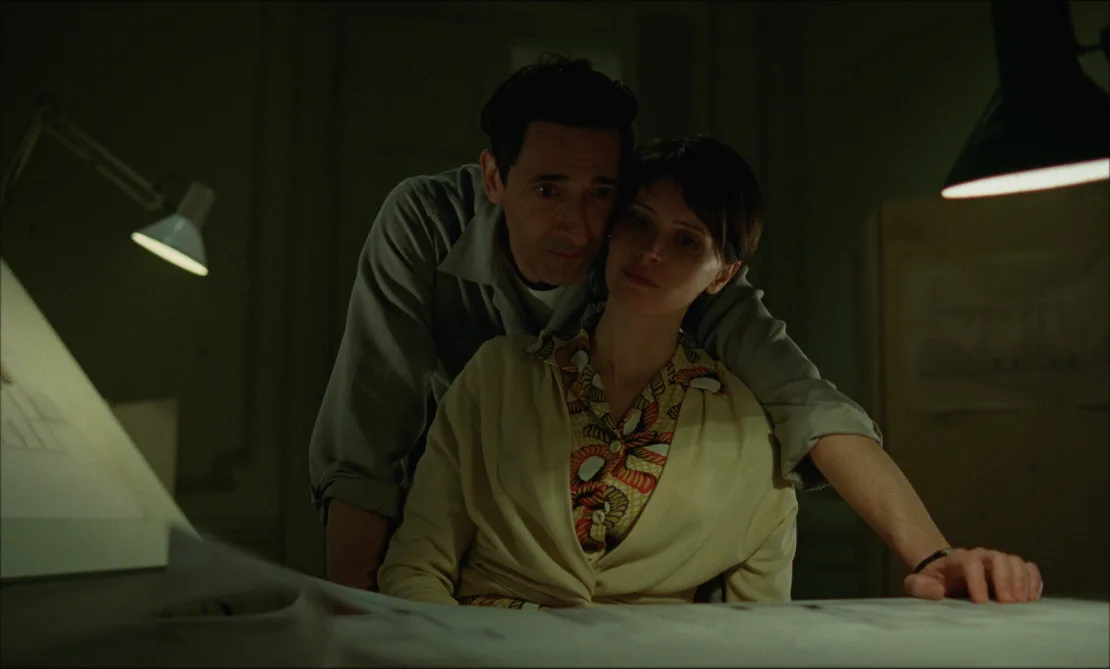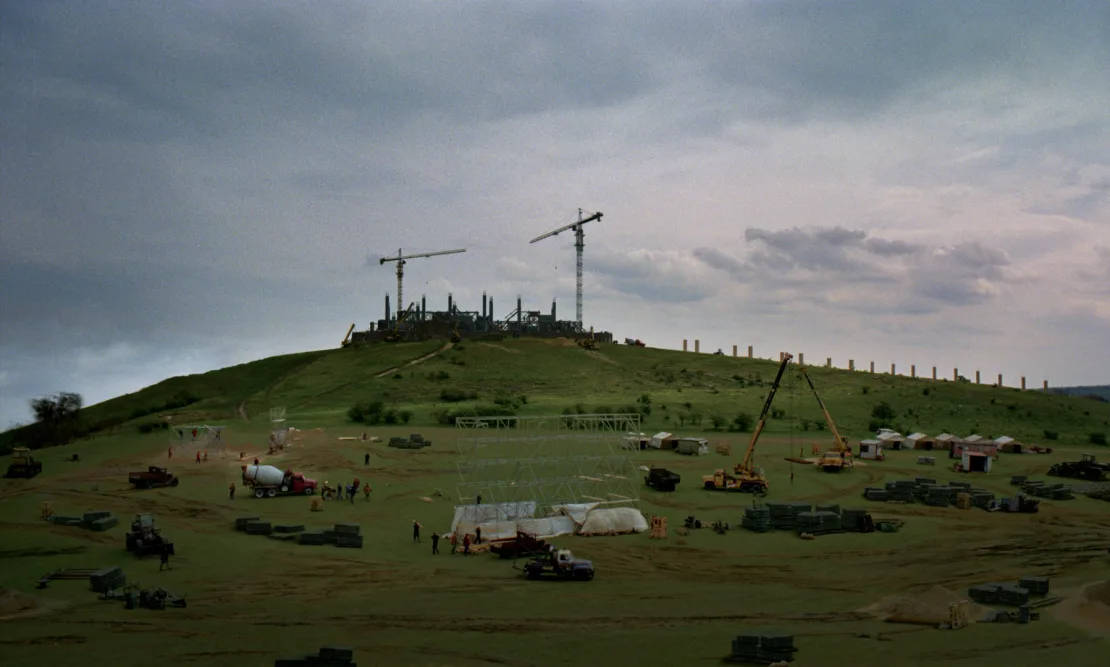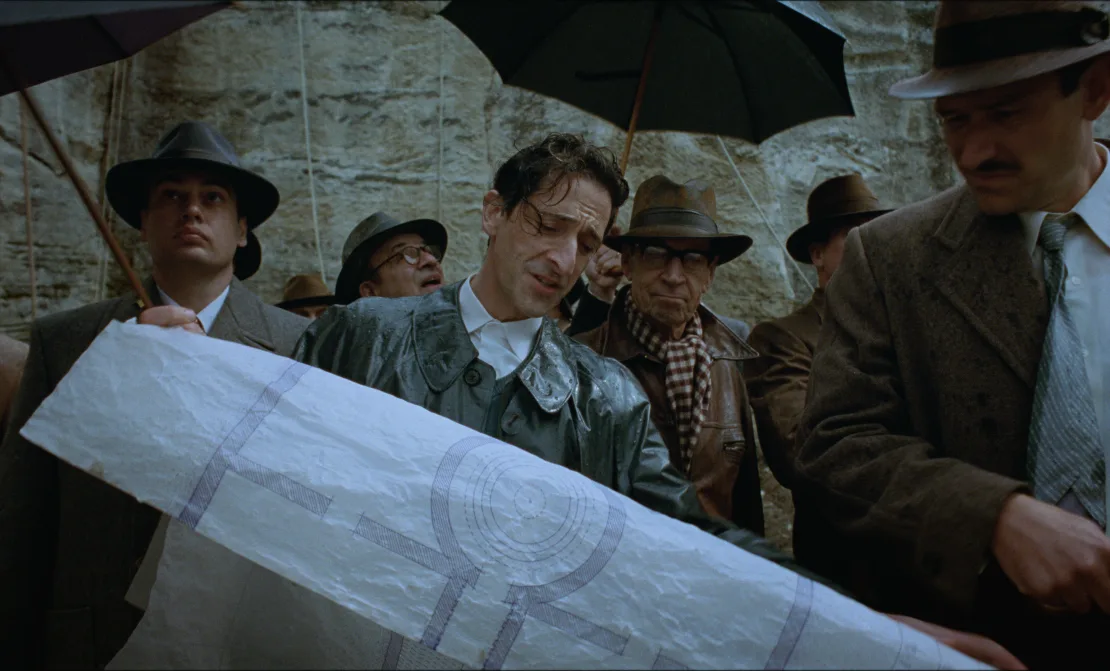Brady Corbet’s latest cinematic endeavor, The Brutalist, is a sprawling narrative of resilience, ambition, and the haunting intersections of art and trauma. Lauded as a modern epic and already a favorite among critics and award circuits, the film offers a deeply layered portrayal of fictional architect László Tóth, played with gripping intensity by Adrien Brody.
Corbet’s third directorial feature immerses audiences in the life of Tóth, a Holocaust survivor rebuilding his career in post-war America. The three-and-a-half-hour opus, complete with an intermission and shot in the rarely used VistaVision format, is as much a visual spectacle as it is a poignant exploration of the human spirit.
A Story Etched in Concrete
Set in mid-20th-century America, the narrative begins with Tóth, a celebrated Jewish architect in pre-war Europe, grappling with the aftermath of his internment in a concentration camp. Upon relocating to the United States in 1947, Tóth discovers that his wife, Erzsébet (Felicity Jones), has also survived the Holocaust. Their reunion, however, is contingent upon a Faustian bargain with industrialist Harrison Lee Van Buren (Guy Pearce), who commissions Tóth to design a monumental public institute.

Van Buren’s patronage offers Tóth a chance to resurrect his career, but it comes with a steep personal cost. As Erzsébet warns him not to let the project consume him, Tóth’s obsession with completing his magnum opus takes on a life of its own, blurring the lines between creation and self-destruction.
The Architecture of the Soul
Central to the film’s narrative is the institute Tóth is commissioned to design—a monolithic concrete structure perched atop a hill. The building serves as both a symbol of Tóth’s creative genius and a manifestation of his inner turmoil. Production designer Judy Becker’s meticulous work brings the fictional architect’s vision to life, blending influences from Bauhaus pioneers, Hungarian modernist Marcel Breuer, and Brutalist icon Tadao Ando.

Becker’s designs extend beyond aesthetics, infusing the institute with profound symbolism. The cross-shaped structure, with its claustrophobic interiors and open chapel, mirrors Tóth’s dual experiences of imprisonment and freedom. The building becomes a canvas for the architect’s trauma, rebellion, and quest for redemption, making it as much a character in the story as Tóth himself.
An Artistic Reflection
Corbet’s collaboration with Mona Fastvold, who co-wrote the screenplay, and Adrien Brody, whose Hungarian heritage and family history informed his portrayal of Tóth, lends the film an authenticity that resonates deeply. Brody’s performance captures the architect’s fragility and determination, while Becker’s “method design” anchors the visual storytelling in rich, textural detail.
Beyond its narrative, The Brutalist is a meditation on the artistic process itself. It delves into the sacrifices and obsessions that define creators, exploring how art becomes a medium for processing grief and seeking immortality. As Brody notes, “All artists are pushing to build something of lasting significance to leave behind. That’s my journey, and it’s Tóth’s journey too.”

A Monumental Achievement
With its ambitious scope, intricate storytelling, and breathtaking visuals, The Brutalist is more than a film—it’s an experience. As it prepares to debut in U.S. cinemas on December 20 and in the UK on January 24, it promises to leave an indelible mark on audiences and critics alike.
By seamlessly blending historical weight with artistic introspection, Brady Corbet has crafted a masterpiece that not only captures the essence of an artist’s struggle but also elevates the cinematic art form itself.








